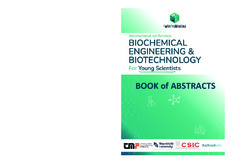Приказ основних података о документу
Edible flowers of marigold (Calendula officinalis L.) as functional food
| dc.creator | Vuković, Sandra | |
| dc.creator | Stojanović, Marija | |
| dc.creator | Kilibarda, Sofija | |
| dc.creator | Moravčević, Đorđe | |
| dc.creator | Vujošević, Ana | |
| dc.creator | Pantović, Jelena | |
| dc.creator | Kostić, Aleksandar Ž. | |
| dc.date.accessioned | 2024-02-02T10:41:05Z | |
| dc.date.available | 2024-02-02T10:41:05Z | |
| dc.date.issued | 2023 | |
| dc.identifier.isbn | 978-86-7401-389-2 | |
| dc.identifier.uri | http://aspace.agrif.bg.ac.rs/handle/123456789/6839 | |
| dc.description.abstract | Marigold (Calendula officinalis L.) from the Asteraceae family is annual or perennial plant with many purposes: pot or garden ornamental plant, an ingredient in cosmetic products, medicinal plant and edible food decoration. Marigold flowers are source of bioactive compounds beneficial to human health. About that, in this study 80% methanol and 80% acetone extracts were used for spectrophotometric determination of photosynthetic pigments chlorophyll a and b, and total carotenoid content (TCC), total phenolic (TPC), flavonoid (TFC), and hydroxycinnamic acid derivative (HCAs) content (Tab. 1) and antioxidant activity by TAC (in vitro phosphomolybdenum), FRP (ferric reducing power), CUPRAC (cupric reducing antioxidant capacity), DPPH⦁ (2,2-diphenyl-1-picrylhydrazyl radical scavenging) assays (Tab. 2). The obtained results were analyzed by one-way analysis of variance (ANOVA) and post hoc Tukey`s HSD test and the results were expressed as mean ± standard deviation (SD). The obtained indicated statistically significantly higher content of all tested parameters in acetone extracts compared to methanol extracts. The content of photosynthetic pigments was lower compared to other edible flowers pigment content from the Asteraceae family. Regarding the antioxidant activity of marigold flowers, in TAC and FRP assays acetone extract also had higher antioxidant activity, while in CUPRAC and DPPH⦁ assays there is no statistically significant difference between the tested extracts. Based on their phytochemical properties, marigold flowers can be classified as functional food. | sr |
| dc.language.iso | en | sr |
| dc.publisher | UNIVERSITY OF BELGRADE, FACULTY OF TECHNOLOGY AND METALLURGY | sr |
| dc.relation | info:eu-repo/grantAgreement/MESTD/inst-2020/200116/RS// | sr |
| dc.rights | openAccess | sr |
| dc.rights.uri | https://creativecommons.org/licenses/by/4.0/ | |
| dc.source | International Conference on Biochemical Engineering and Biotechnology for Young Scientists | sr |
| dc.subject | antioxidant activity | sr |
| dc.subject | Calendula officinalis L. | sr |
| dc.subject | marigold | sr |
| dc.subject | phytochemical characterization | sr |
| dc.title | Edible flowers of marigold (Calendula officinalis L.) as functional food | sr |
| dc.type | conferenceObject | sr |
| dc.rights.license | BY | sr |
| dc.citation.epage | 65 | |
| dc.citation.spage | 65 | |
| dc.identifier.fulltext | http://aspace.agrif.bg.ac.rs/bitstream/id/26093/bitstream_26093.pdf | |
| dc.identifier.rcub | https://hdl.handle.net/21.15107/rcub_agrospace_6839 | |
| dc.type.version | publishedVersion | sr |


